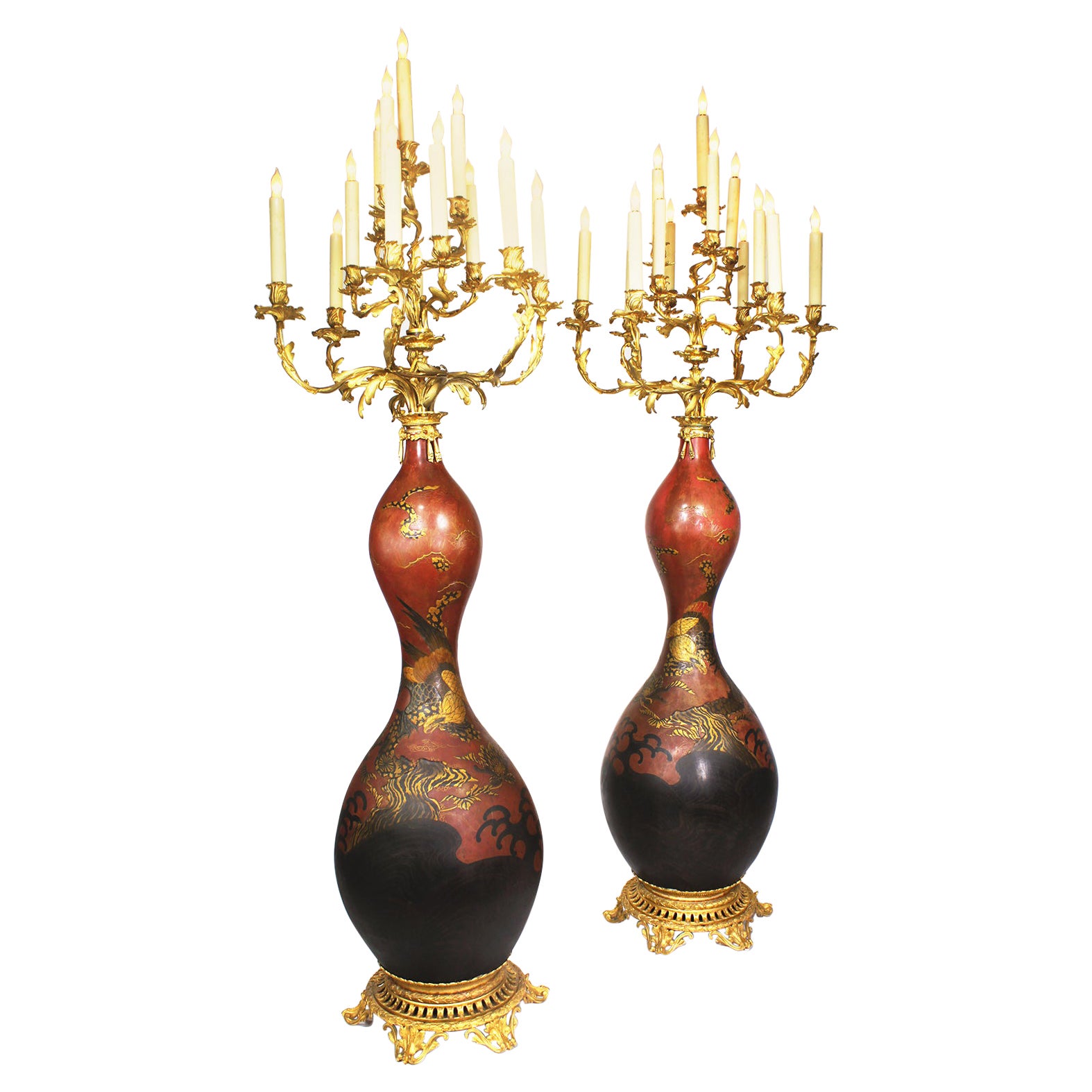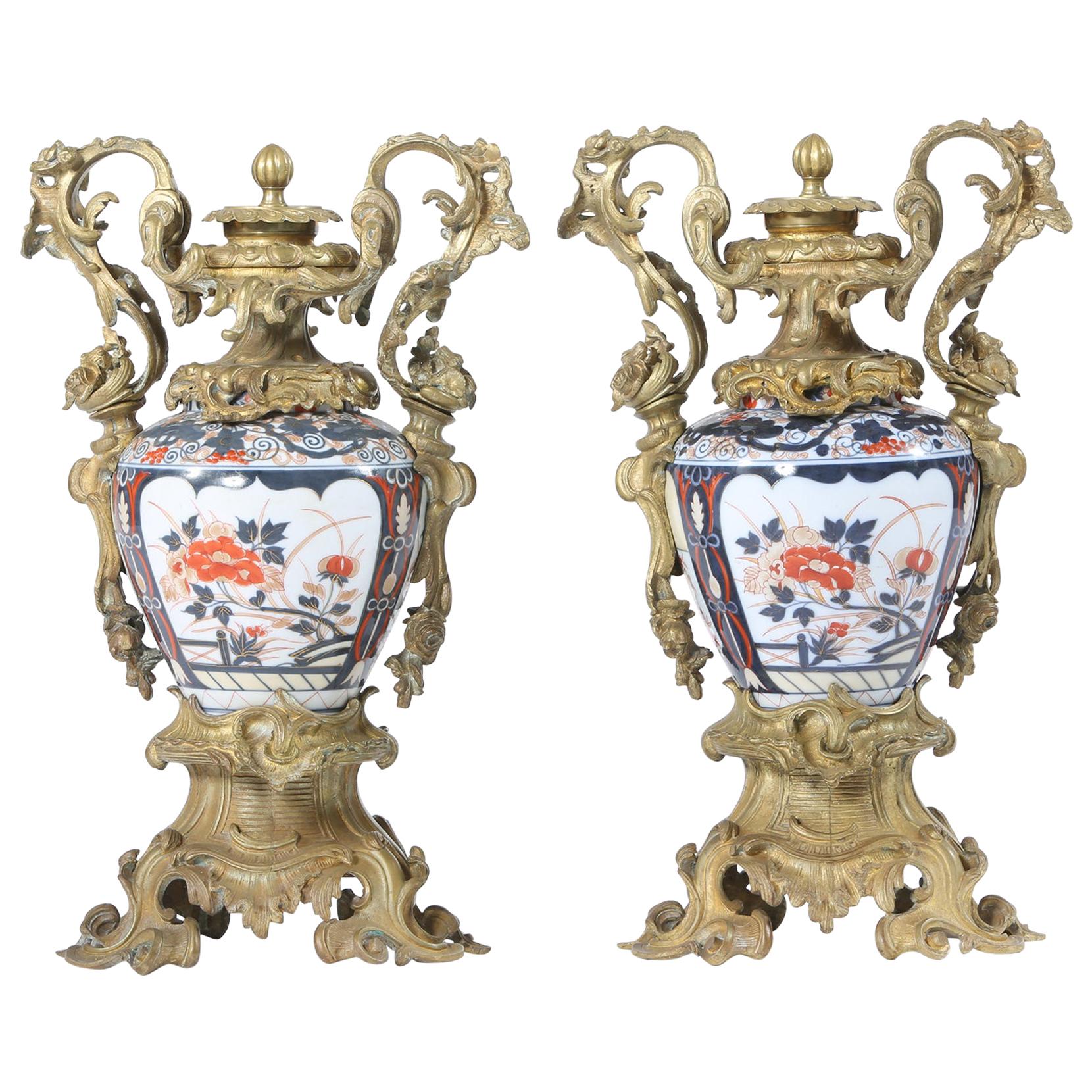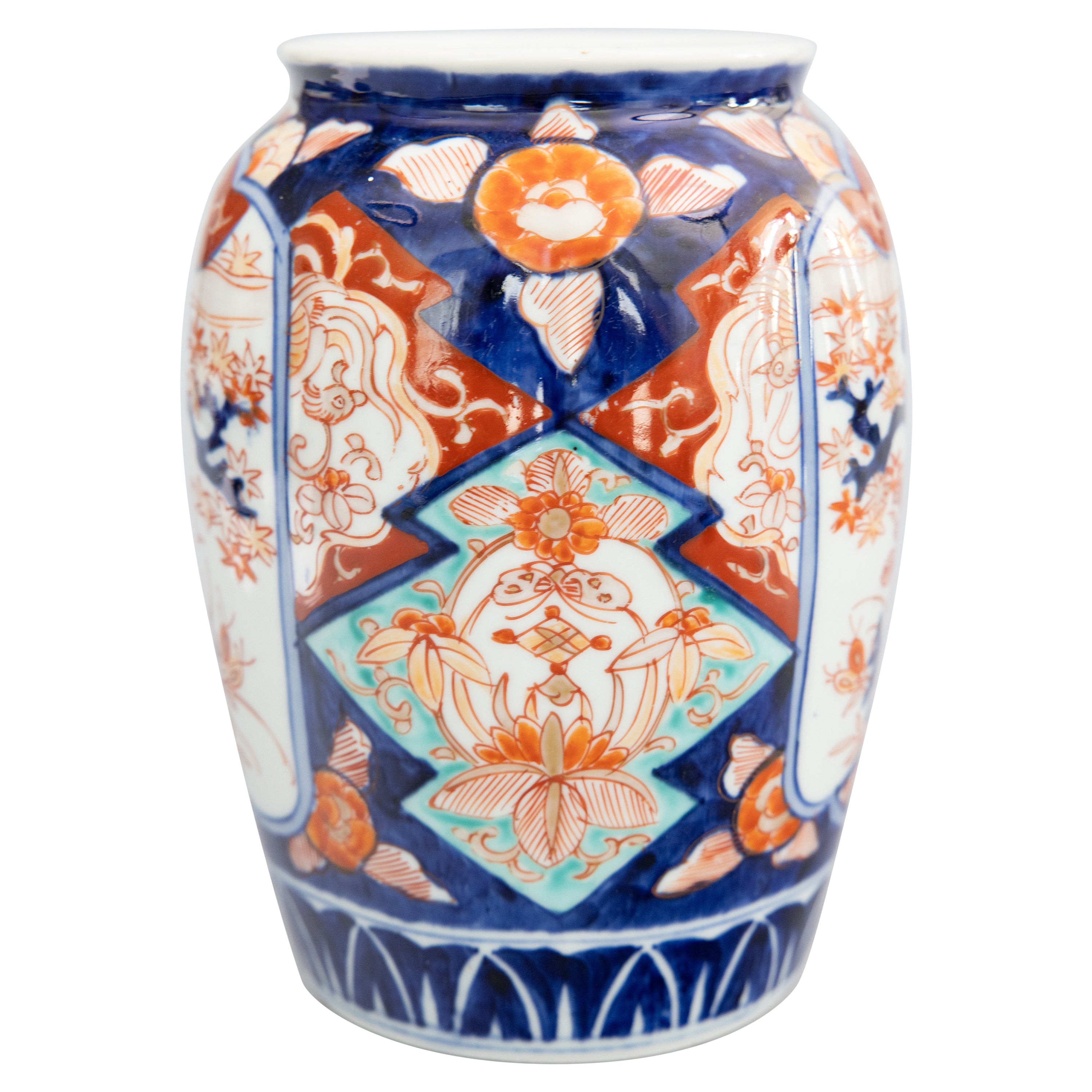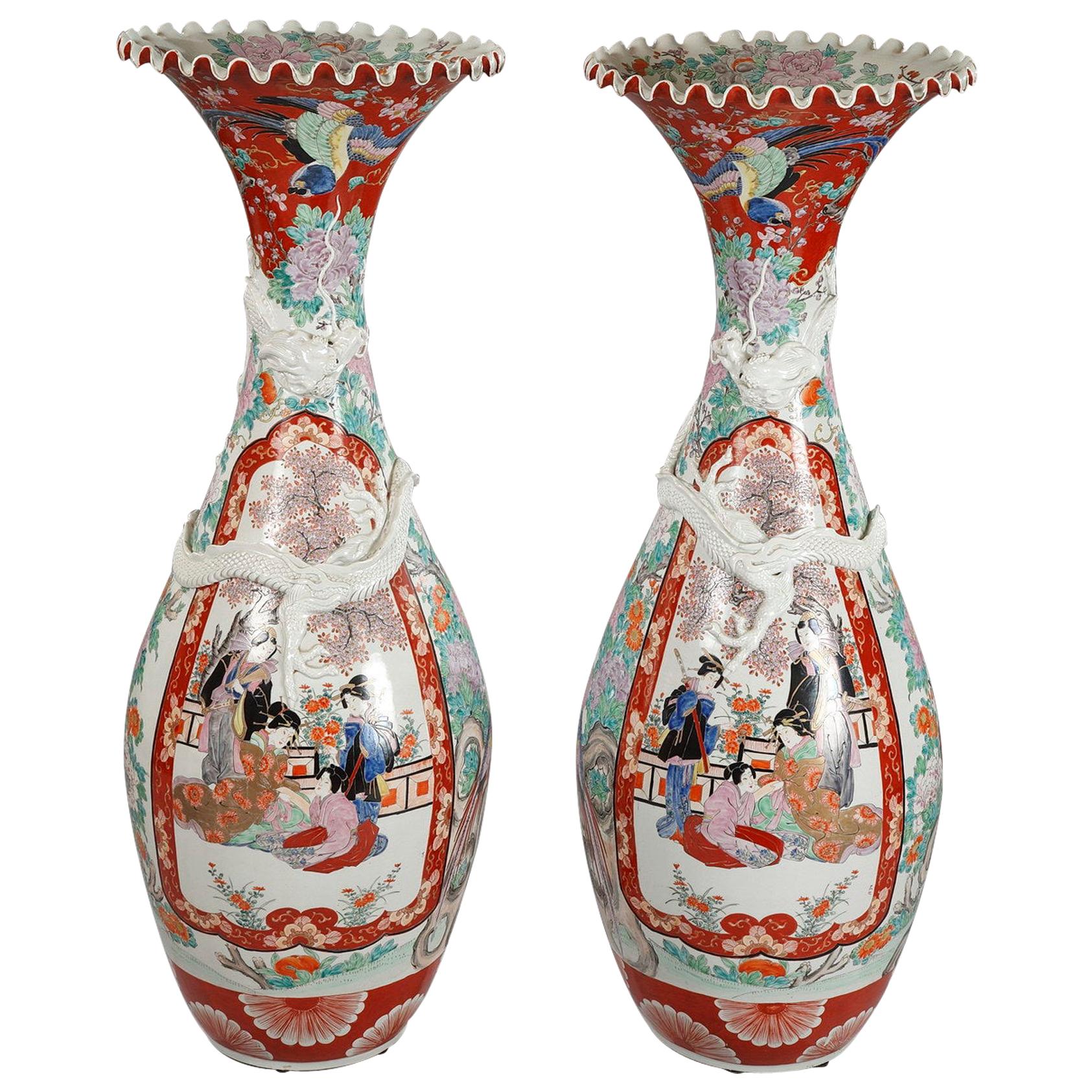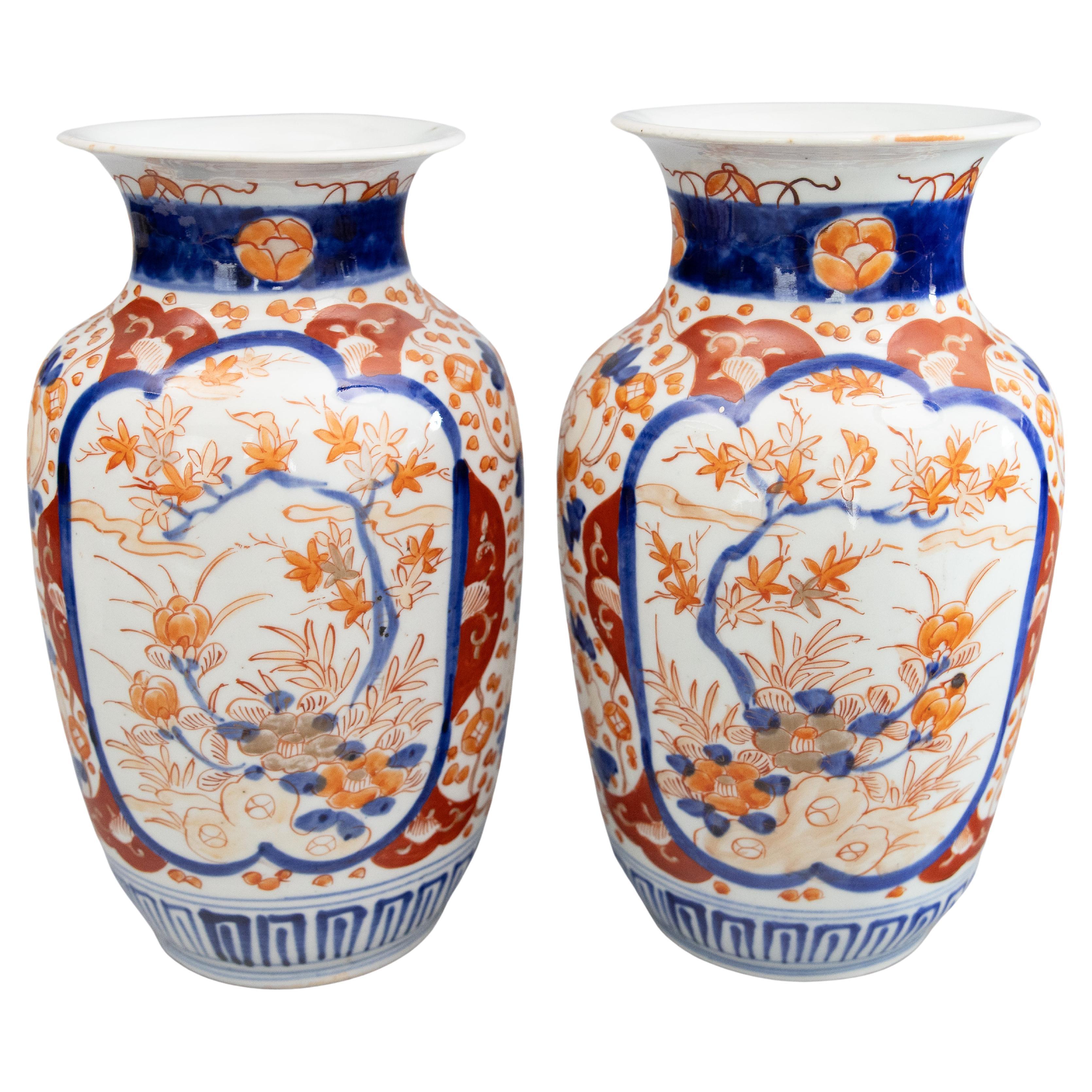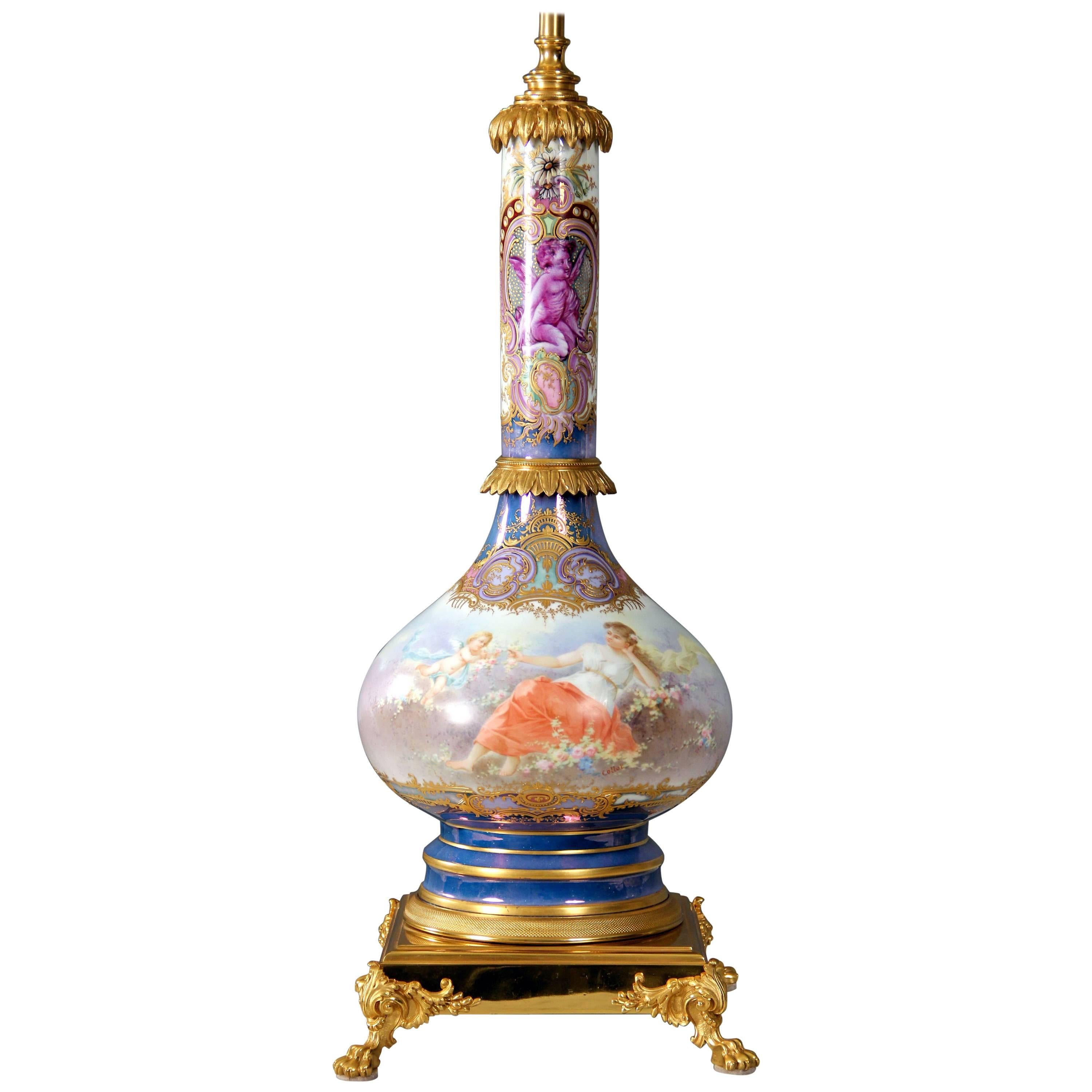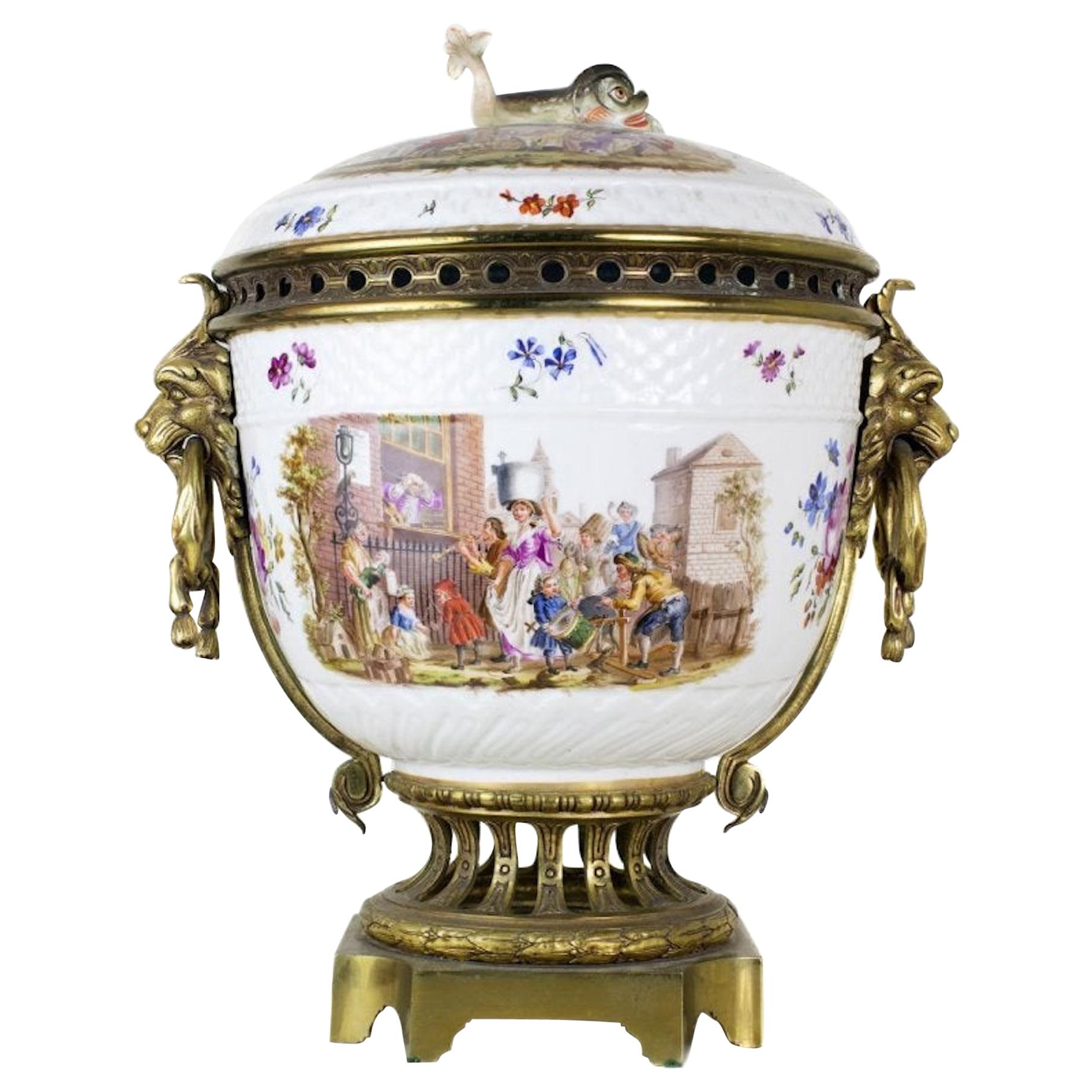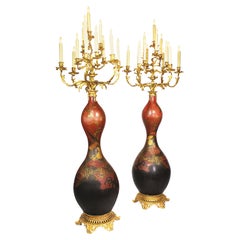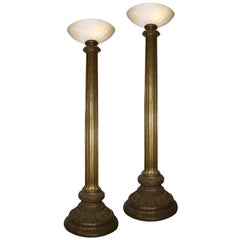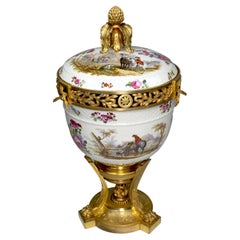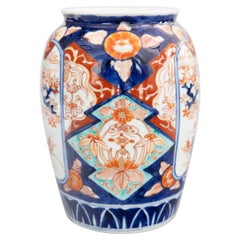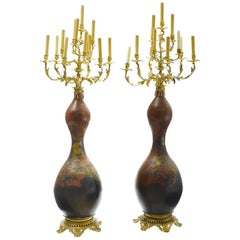
Pair 19th Century Japanese Porcelain and Gilt Bronze Mounted Torchere Floor Lamp
View Similar Items
Want more images or videos?
Request additional images or videos from the seller
1 of 7
Pair 19th Century Japanese Porcelain and Gilt Bronze Mounted Torchere Floor Lamp
About the Item
- Attributed to:Imari Porcelain (Manufacturer)
- Dimensions:Height: 64.25 in (163.2 cm)Diameter: 25 in (63.5 cm)
- Sold As:Set of 2
- Style:Rococo (In the Style Of)
- Materials and Techniques:
- Place of Origin:
- Period:
- Date of Manufacture:circa 1880-1890
- Condition:Repaired: Touch ups. Wear consistent with age and use. Minor losses. Minor fading. Wired for electricity. Prior to installation the entire electrical wiring system and structure must be inspected, verified and approved by a licensed electrical contractor.
- Seller Location:Los Angeles, CA
- Reference Number:Seller: Ref.: A21271stDibs: LU179624252173
About the Seller
5.0
Vetted Seller
These experienced sellers undergo a comprehensive evaluation by our team of in-house experts.
Established in 1982
1stDibs seller since 2016
114 sales on 1stDibs
More From This SellerView All
- Pair 19th Century Japanese Imari Porcelain & Gilt-Bronze Torchere CandelabraBy Imari PorcelainLocated in Los Angeles, CAA fine Pair of 19th century Japanese Imari Porcelain and French Gilt-Bronze Mounted Thirteen-Light Celadon Torchere Candelabra. The bottle-shaped Japonisme vases with a Royal red background, decorated with parcel-gilt and black soaring eagles in the hunt within a forestall scene. Each Vase fitted and surmounted with a French 19th century Louis XV Style 13-Light scrolled candelabrum and all raised on a circular pierced gilt-bronze plinth. circa: 1880. Imari Porcelain (????) is the name for Japanese porcelain wares made in the town of Arita, in the former Hizen Province, northwestern Kyushu. They were exported to Europe extensively from the port of Imari, Saga, between the second half of the 17th century and the first half of the 18th century. The Japanese as well as Europeans called them Imari. In Japanese, these porcelains are also known as Arita-yaki (???). Imari or Arita porcelain has been continously produced up through the present day. Characteristics Though there are many types of Imari, Westerners' conception of Imari in the popular sense is associated only with a type of Imari produced and exported in large quantity in mid-17th century. This type is called Kinrande. Kinrande Imari is colored porcelain with cobalt blue underglaze and red and gold overglaze. The color combination was not seen in China at that time. Traditional Ming dynasty color porcelain used dominantly red and green, probably due to scarcity of gold in China, whereas gold was abundant in Japan in those days. The subject matter of Imari is diverse, ranging from foliage and flowers to people, scenery and abstractions. Some Imari design structures such as kraak style were adopted from China, but most designs were uniquely Japanese owing to the rich Japanese tradition of paintings and costume design. The porcelain has a gritty texture on the bases, where it is not covered by glaze. There is also blue and white Imari. Kakiemon style Imari is another type of Imari, but it tends to be categorized separately in Europe. History "Imari" was simply the trans-shipment port for Arita wares. It was the kilns at Arita which formed the heart of the Japanese porcelain industry. Arita's kilns were set up in the 17th century, when kaolin was discovered in 1616 by the immigrant Korean potter, Yi Sam-pyeong (1579–1655). (He may also be known by the name, "Kanage Sambei".) Yi Sam-Pyeong, along with his extended family of 180 persons, left Korea on the offer of a privileged position in Japan. This decision was made after the occurrence of certain Japanese invasions of Korea. After Yi Sam-Pyeong's discovery, his kilns began to produce revised Korean-style blue and white porcelains, known as "Shoki-Imari". In the mid-17th century there were also a lot of Chinese refugees in Northern Kyushu due to the turmoil on Chinese continent, and it is said one of them brought coloring technique to Arita. Thus Shoki-Imari developed into Ko-KutaniImari. Ko-Kutani was produced around 1650 for both export and domestic market. Blue and white porcelain continued to be produced and they are called Ai-Kutani. Ko-Kutani Imari for the export market usually adopted Chinese design structure such as kraak style, whereas Ai-Kutani for the domestic market were highly unique in design and are accordingly valued very much among collectors. Ko-Kutani style evolved into Kakiemon style Imari, which was produced for about 50 years around 1700. Imari achieved its technical and aesthetic peak in Kakiemon style, and it dominated European market. Blue and white Kakiemon is called Ai-Kakiemon. Kakiemon style transformed into Kinrande in the 18th century. Kinrande used blue underglaze and red and gold overglaze, and later some other colors. Imari began to be exported to Europe because the Chinese kilns at Ching-te-Chen were damaged in the political chaos and the new Qing dynasty government stopped trade in 1656–1684. Exports to Europe were made through the Dutch East India Company, but the designation "Imari Porcelain" in Europe connotes Arita wares of mostly Kinrande Imari. Export of Imari to Europe stopped in mid-18th century when China began export to Europe again, since Imari was not able to compete against China due to high labor cost. By that time, however, both Imari and Kakiemon style were already so popular among Europeans, Chinese export porcelain copied both Imari and Kakiemon style, which is called Chinese Imari. At the same time, European kilns, such as Meisen also tried to copy Imari and Kakiemon. Export of Imari surged again in late 19th century (Meiji era) when Japonism flourished in Europe. Thus in western world today, two kinds of Imari can...Category
Antique 19th Century Japanese Japonisme Floor Lamps
MaterialsOrmolu, Bronze
$19,850 Sale Price / set59% Off - Pair of French Belle Époque 19th-20th Century Gilt Bronze and Alabaster TorchereLocated in Los Angeles, CAA palatial pair of French Belle Époque 19th-20th century gilt bronze and alabaster tall torchières. The slender center column raised on a circular intri...Category
Antique Early 1900s French Belle Époque Floor Lamps
MaterialsAlabaster, Bronze
$19,850 Sale Price / set42% Off - Fine German 19th Century Porcelain and Gilt-Bronze Mounted Potpourri Urn VaseBy Meissen PorcelainLocated in Los Angeles, CAA very fine German 19th century porcelain and gilt-bronze mounted Potpourri Urn-Vase with Lid, attributed to Meissen. The ovoid white porcelain urn, decorated on all sides and lid wi...Category
Antique 19th Century German Regency Revival Planters, Cachepots and Jard...
MaterialsOrmolu, Bronze
$12,850 Sale Price32% Off - Pair French 19th-20th Century Neoclassical Style Iron and Parcel-Gilt TorcheresLocated in Los Angeles, CAA Palatial Pair of French 19th/20th Century Neoclassical Revival Style Ebonized Cast-Iron and Parcel-Gilt Torcheres (torchières - Lamp Posts). The park-like torcheres surmounted with...Category
Antique Early 1900s French Neoclassical Revival Floor Lamps
MaterialsIron, Zinc
$14,950 Sale Price / set48% Off - Fine French 19th-20th Century Louis XV Style Belle Epoque Gilt-Bronze TorchereLocated in Los Angeles, CAA fine and Large French 19th-20th century Louis XV Style Belle Époque gilt bronze four-light torchère with Laurel Wreaths with white opaline glass globes, raised on a two-tone circul...Category
Antique Early 1900s French Louis XV Floor Lamps
MaterialsMarble, Bronze
$24,950 Sale Price35% Off - Fine Pair of French 19th Century Marble and Gilt Bronze-Mounted Flambeaux UrnsLocated in Los Angeles, CAA fine pair of French 19th century Rouge-Royal marble and figural gilt bronze-mounted flambeaux urns surmounted with four ormolu figures of dolphins supporting the center urn with th...Category
Antique 19th Century French Louis XV Urns
MaterialsMarble, Bronze
$19,850 Sale Price / set43% Off
You May Also Like
- 19th Century Pair / Gilt Bronze Mounted Imari Porcelain VasesLocated in Tarry Town, NYEarly 19th century pair of gilt bronze mounted imari porcelain decorative vases or urns. Each urn is in good antique condition with minor wear consistent...Category
Antique Early 19th Century European Urns
MaterialsBronze
- 19th Century Gilt Gold Porcelain / Bronze Mounted CenterpieceLocated in Tarry Town, NY19th Century hand painted gilt gold design porcelain with footed bronze mounted decorative centerpiece with side handles. The centerpiece is in great condition. Minor wear consistent...Category
Antique Mid-19th Century French Centerpieces
MaterialsGold, Bronze
- Antique 19th Century Japanese Imari Porcelain VaseBy Imari PorcelainLocated in Pearland, TXA gorgeous antique 19th-Century Japanese Imari vase made in the Meiji period, circa 1870. This fine vase has a lovely lobed shape and hand painted floral design in the traditional Im...Category
Antique 19th Century Japanese Meiji Vases
MaterialsPorcelain
- Antique 19th Century Japanese Imari Porcelain VaseBy Imari PorcelainLocated in Pearland, TX19th-Century Japanese Imari porcelain vase. This fine vase have a lovely shape and hand painted floral designs in the traditional Imari colors.Category
Antique 19th Century Japanese Japonisme Vases
MaterialsPorcelain
- Pair of Large Imari Porcelain Vases, Japan, Late 19th CenturyBy Imari PorcelainLocated in PARIS, FRA very fine pair of Imari porcelain vases, of tapering form with flared top. Decorated with polychrome birds and flowers on white background. The body is painted with shaped panels o...Category
Antique Late 19th Century Japanese Vases
MaterialsPorcelain
- Pair of 19th Century Japanese Meiji Period Imari Porcelain VasesBy Imari PorcelainLocated in Pearland, TXA gorgeous pair of 19th-Century Japanese Meiji Period Imari porcelain vases. These fine vases have a lovely shape and hand painted floral designs in the traditional Imari colors. The...Category
Antique Late 19th Century Japanese Meiji Vases
MaterialsPorcelain
$1,516 Sale Price / set20% Off
Recently Viewed
View AllMore Ways To Browse
Misia Arte
Retro Toleware Floor Lamp
Vintage Tanning Lamp
Vintage Toleware Floor Lamp
Adjustable Chrome Floor Lamp Laurel
Carlo Nason 338
Chrome Floor Lamp Sonneman 8
Estudio Calido
Etna Watch
Floor Lamp Curva
Hans Agne G20
Jean Boris Lacroix Floor Lamp
Joe Colombo 3321
Les Artisans De Marolles
Moana Lamp
Paavo Tynell 9602 Floor Lamp Canvas Shade
Pelican Floor Lamp
Reticulated Floor Lamp
